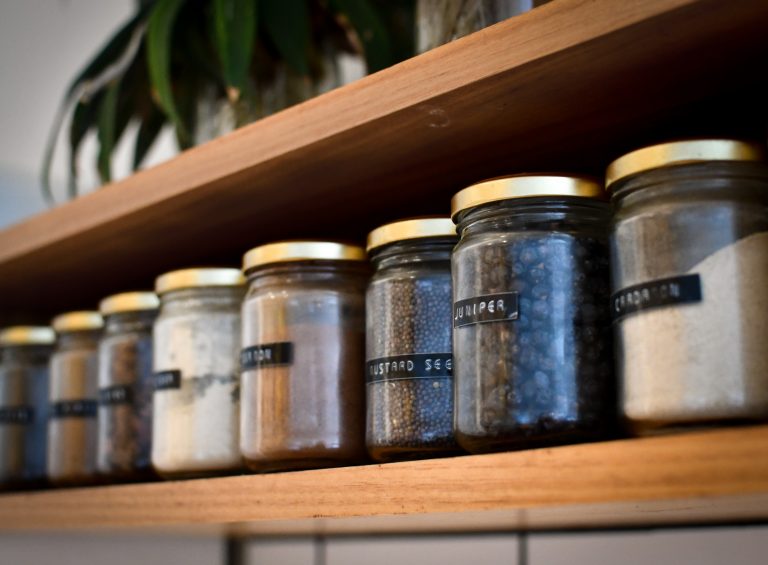I support and participate in parts of the zero-waste movement. However...
Upfront, I want to say that I fully support and take part in some aspects of the zero-waste movement! Being more mindful of my purchasing decisions (especially as it relates to packaging) has helped me reduce the trash I produce and, in many instances, has saved me money.
However, I can’t completely endorse zero-waste tips, products, and businesses without also addressing some problems behind the movement.
If you’re taking steps to reduce your waste footprint, please do not let these problems discourage you! Just keep these in mind as you move through your own personal sustainability journey.

Waste is just one piece of our environmental footprint
I think one of the reasons zero-waste gets a lot of attention is because it’s easy for us to see the waste we produce. Most people (I hope) have seen photos or videos of the swaths of plastic waste floating in our oceans and marine life getting tangled up in it. Waste, especially plastic, is in our faces everywhere we turn!
We tend to think less about the other environmental and social issues embedded in the items we purchase. For example, zero-waste doesn’t always take into account:
Water usage
Sustainable agriculture
Sustainable manufacturing
Worker welfare
Greenhouse gas emissions from shipping and transportation
Reducing the amount of waste we produce is critically important. However, we can’t forget about the environmental and social damage that starts before a product even makes it to our hands.

Zero-waste isn't always accessible
This doesn’t just apply to zero-waste. The same can be argued for any sustainable alternatives — including things like Fair Trade coffee or high-end sustainable fashion.
Of course, some low- or zero-waste swaps can actually help you save money. Shopping in the bulk foods aisle, switching to a stainless steel razor, or buying only secondhand clothing will save you a big chunk of change overtime. However, not everyone has the financial or geographical option to switch to low-waste alternatives or pay for the upfront investment.
Take food, for example. Over 23 million Americans live in food deserts, meaning good grocery stores in those areas are few and far between. What is available probably isn’t going to resemble the bring-your-own-container ideal of the zero-waste movement. Not to mention, about 20% of people living in food deserts have an income at or below the poverty level. It totally makes sense that those people might prioritize affordability over eco-friendly options (even if they do care)!
That’s not to say that low-income individuals in less affluent communities can’t reduce their waste in other ways. However, it’d be remiss to say that the degree to which someone can reduce their waste and choose sustainable alternatives is a level playing field (it’s not).

Zero-waste isn't always inclusive
Environmental issues are inherently tied to racism and racial injustice. The same is true when it comes to the waste we produce and where that waste ends up.
Low-income and communities of color are:
- More likely to sit next to landfills and hazardous waste facilities
- Exposed to higher rates of air and water pollution
- Disproportionately affected by the impacts of climate change
If one of the goals of zero-waste is to create cleaner, healthier environments, what good are individual choices if certain communities remain dumping grounds for whatever waste remains?
Individual choices to reduce waste are still important. However, as we find solutions to address consumer waste, we also need solutions to prevent low-income and BIPOC communities from bearing the brunt of our BS.
If you’re interested in learning more, I recently compiled a list of books on environmental racism.

Women are largely responsible for extra labor involved in zero-waste
If you’re reading this, there’s a good chance you’re a woman — which means you’re also more likely to be responsible for unpaid labor at home. This could include anything from washing the dishes to planning family gatherings, or picking out birthday gifts.
The ever-present gendered division of labor at home is startling:
- Women spend about 4 hours a day on unpaid work.
- The uneven distribution of domestic labor is the leading cause for gender gaps in pay and promotions.
- If women earned minimum wage for unpaid labor, global earnings would top about $1.5 trillion.
- Young couples (18-34) are no more egalitarian when it comes to gender roles at home than older ones.
If we want low-waste lifestyles to truly become the norm, men will need to step it up big time.
Women can’t be the only ones to bring reusable containers to the store, buy zero-waste shampoos, and DIY their own cleaning products.

It can put the blame of environmental issues on the shoulders of consumers
In 1971, the nonprofit Keep America Beautiful launched an advertising campaign aimed to encourage consumers to stop littering. Their famous commercial, titled the “Crying Indian” (watch the video here) ends with this message: “People start pollution. People can stop it.”
It created a misconception that consumers were largely at fault for waste pollution. There’s no mention in that advertisement of corporate responsibility to only manufacture recyclable or compostable packaging — or forego packaging altogether.
The zero-waste movement does give consumers the opportunity to “vote” with their dollar by choosing to buy recyclable or package-free options. But at the end of the day, companies have a drastically larger environmental footprint compared to consumers. Therefore, they have an even greater obligation to address packaging waste and larger sustainability issues in general.
If you’re taking steps to reduce waste in your life, please don’t stop! I only ask that you don’t view yourself as solely responsible in solving the global waste problem.
Where do we go from here?
I don’t have all the answers on how to go about making low-waste and sustainable living easy and equitable for everyone. However, I do know that it’s going to take the combined efforts of people, businesses, and policy-makers to get there.
Maybe the best place to start is by having conversations. Try bringing low-waste ideas outside of your personal life! Encourage your employer or local policy makers to implement solutions that make it easier for you and others to live more sustainably.
How do you feel about the zero-waste movement? Let us know in the comments!





